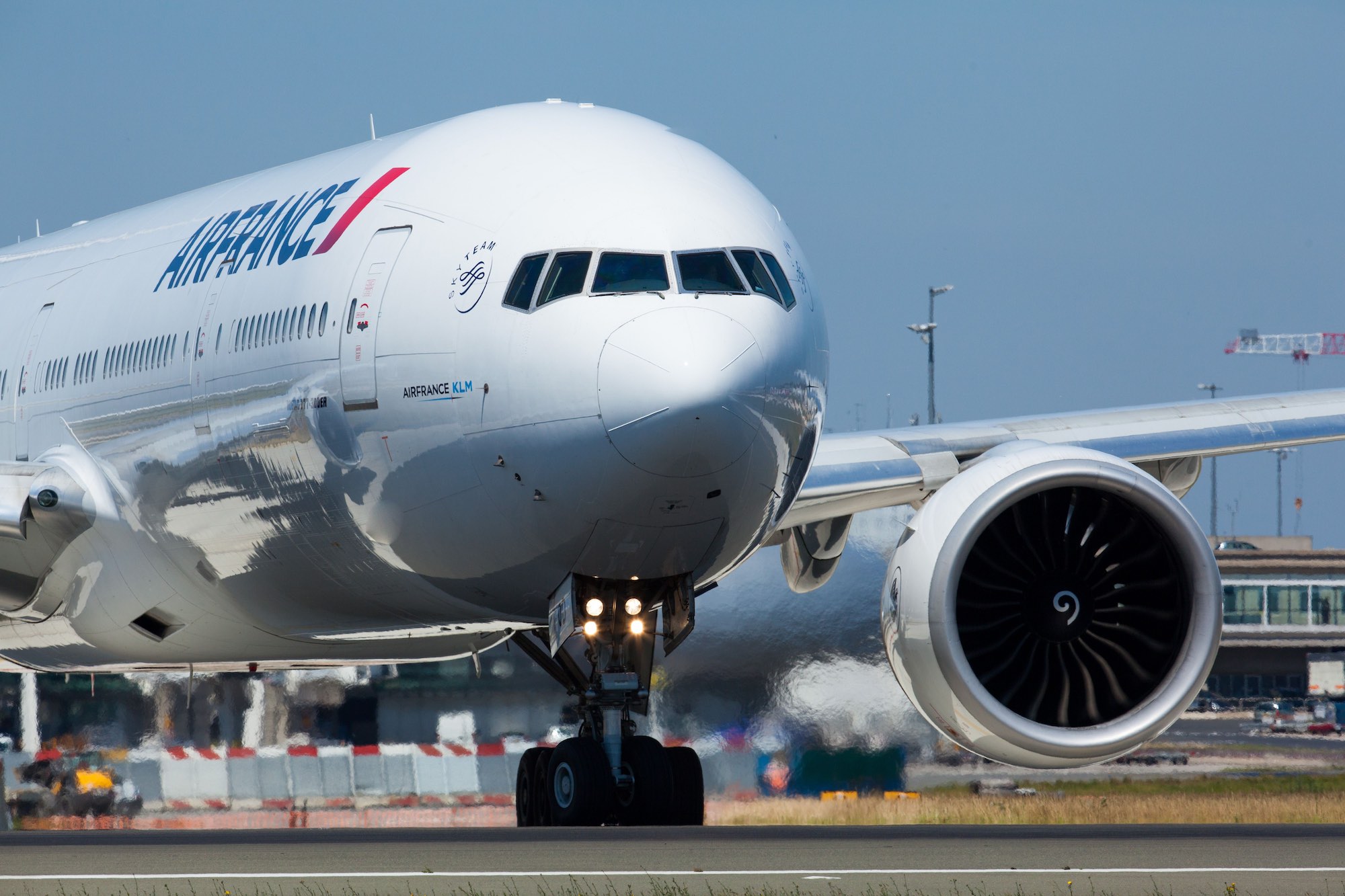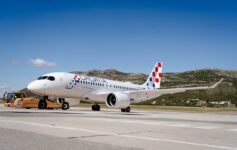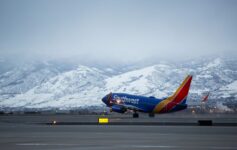
Our resident captain, 121pilot, brings us expert analysis on the recent Air France 11 incident, which we first covered here.
What Really Happened Onboard Air France 11?
As regular readers of Live and Let’s Fly will recall, on April 5, 2022 there was an incident with an Air France 777 landing at Charles De Gaulle Airport (CDG) in Paris. The aircraft experienced flight path oscillations and there emerged some rather dramatic audio from the event thanks to the pilots’ microphones being open. The plane landed normally without an emergency declaration but given the nature of what happened the Bureau of Enquiry and Analysis for Civil Aviation Safety (BEA) opened an investigation.
Matthew and I talked about the incident when it happened and I thought it was odd that there was no emergency declared and that once they had the airplane back under control everything was normal. To me this indicated a crew issue rather than an aircraft one.
The Timeline
Yesterday the BEA, which serves roughly the same role in France as the National Transportation Safety Board (NTSB) in the USA, released an update on their investigation into this incident. I’m going to quote a large section of that update here in the interest of absolute clarity with what happened.
“On final, the aeroplane was established on the localizer and glideslope ILS beams. At 07:49, the crew were cleared to land. They configured the aeroplane for landing, the selected speed was 140 kt. The crew then carried out the “Landing” checklist.
At 07:50:20, when the aeroplane was at an altitude of 1,670 ft5 , the PF continued the approach in manual flight: he disconnected the autopilot (AP), leaving the auto throttle (AT) and the flight directors (FD) activated. He then made inputs on the controls for around 15 seconds. The aeroplane followed the movement of the controls and stayed on the ILS path, the left and right roll being less than 2°.
In the subsequent ten seconds, there were less inputs on the wheel. The co-pilot than made inputs on the control column and wheel with a greater frequency, the amplitude was still small, the aeroplane followed the commands, the left and right roll being less than 3°.
At 07:51:06, the co-pilot expressed his astonishment with respect to the aeroplane’s bank angle. The roll inputs were amplified and the average position of the wheel was at around 6° to the left. The aeroplane turned left with a small bank angle. The captain voiced his surprise with respect to the deviation from the flight path.
At 07:51:12, when the aeroplane was at an altitude of 1,115 ft, banked 7° to the left, with the wheel oriented 16° to the left, the crew carried out a go-around. Up until the go-around, the flight path had remained within the operator’s stabilization criteria. The recorded parameters show that the two pilots then simultaneously made inputs on the controls.
In the following second, the position of the wheel reached a maximum value of 27° to the left. One second later, the roll reached a maximum value of 15° to the left and the nose-up attitude was 12°.
At 07:51:16, the captain commented that the plane was going left. The control columns were then desynchronized for 14 seconds due to opposing forces. The captain held the control column in a slightly nose-down position while the co-pilot made several, more pronounced, nose-up inputs. Two brief episodes of wheel desynchronization were also observed.
At 07:51:20, the go-around switches were pushed again increasing the thrust to the maximum thrust available.
At 07:51:23, the pitch reached a maximum value of 24°.
At 07:51:25, the co-pilot called out “Positive climb” and retracted the landing gear. The configuration warning was displayed and the associated aural warning (siren) sounded. The two pilots continued to simultaneously make inputs on the controls. The captain made more pronounced nose down inputs for a few seconds.
At 07:52:06, the captain was the sole person making inputs. The crew completed the go-around actions. The crew analyzed the situation without perceiving the antagonistic inputs made on the controls and the desynchronizations of the control channels. They considered that they could use the AP again and carry out a new approach.
The co-pilot became the PF again. The captain informed the controller that there had been a problem on the flight controls and asked to join the final for runway 27R. The approach and landing took place without further incident.
The sustained input on the controls led to the PTT button and the AP disconnect switch being involuntarily pressed, the latter action causing several activations of the associated warning.
No failure warning was activated during the occurrence.
No anomaly was observed on the aeroplane. At this stage, the analysis of the parameters does not show inconsistencies, in particular between the movements of the controls and the movements of the aeroplane. The validation and the analysis of the parameters are continuing. Particular attention will be given to reproducing the forces applied to the controls and to the relationship between these forces and the movements of the controls.”
It is worth bearing in mind that the cloud ceiling was reported at 300 feet for the approach. This means that the crew was likely in the clouds and fully reliant upon their instruments. It is an approach to their home field that they have performed hundreds of times; something that leads to a feeling of comfort in the cockpit. They were also likely at least a little tired after their long flight but nothing outside the ordinary for 777 crews.
Based on the first officer’s (FO) actions as reported above it seems likely that he may have become disoriented while hand flying the approach. This is indicated by the fact that with the airplane rolling left the FO continues to make left wing down control inputs.
Fighting For Control
What happened next is the part I find most interesting and concerning. Both pilots began to make control inputs at the same time and began to in essence fight each other for control of the aircraft. The way this should have worked (at least at multiple carriers I’ve worked for in the US) is that when the captain observed the aircraft rolling left he should have called “bank angle”.
This tells the FO that he needs to correct this parameter. (Note: if the captain is the Pilot Flying or PF everything is reversed if he makes a similar error.) The proper response is “correcting” which tells the other pilot that his call has been acknowledged and proper action is being taken to address it. If the FO says nothing or continues to roll left the captain should repeat his call out. If there is still no response the next call out is a firm “my airplane” or “I have the controls” to indicate that he is taking control.
This is a key point. One of the things that should never happen in an airline cockpit is two pilots fighting over the controls of the jet. Hence you have a Pilot Flying or PF (in this case the FO) and a Pilot Not Flying or PNF (in this case the captain). The PNF should keep his hands off the aircraft controls unless he is assuming the role of PF in which case he needs to clearly and firmly call this fact out so that there is no doubt about who is flying the airplane. Its apparent from both the BEA’s update and the audio transcripts that this didn’t happen as it should have on that flight. That it didn’t seems to be the central cause at this time of what created this incident.
As an A320 series pilot the issue of fighting for the controls becomes more interesting. In an aircraft like the 777 where the controls are physically linked the position of the control wheel tells you what control inputs are being made. If both pilots are trying to make different inputs in essence the stronger pilot will win.
In the side stick fly by wire Airbus however, there is no physical link between the two sticks. Instead, what happens is that the computers add the control inputs together. So, if for example, one pilot pushes his stick full nose down while the other pulls full nose up the result is zero. Or if both command half nose up the result is full nose up.
This is why its especially critical on the Airbus that only one pilot flies the airplane at a time. Now if both pilots make control inputs the aircraft will warn you by calling out “Dual Input” and flashing a light on the instrument panel. The system is very sensitive such that even a small input by the PNF can trigger this warning.
And if one pilot were to become incapacitated his stick can be locked out by pushing down the Auto Pilot disconnect button on the other stick for a proscribed amount of time. Doing so will lock out the other stick. Because of the unique way the system works compared to more normal mechanically linked controls, it is something we train every year.
Links To Air France 447
There is one final though that this incident brings to mind. After the crash of Air France 447 there was a radical shift in how US pilots were trained. We began to devote a significant amount of our annual training simulator time to flying the aircraft with all the automation turned off. 447 was a wake up call that automation dependency was potentially deadly and the FAA reacted immediately. It also mandated that the simulator software be modified to properly simulate post stall aircraft behavior.
Once those modifications were in place, we started training every year on recovering from full stalls and other upsets that are well outside the normal envelope for an airliner. What’s noteworthy and surprising is that Europe did not respond in a similar fashion. My contacts in Europe have told me that unlike what the FAA mandated in the US, European regulators have not emphasized either hand flying the aircraft or recovery from unusual attitudes the way the FAA did in response to 447. I don’t know if automation dependency played any role in what happened to AF11 on April 5th but it is a question the BEA should certainly be asking.
Questions?
Finally a reminder. If you have questions about flying or airline operations you can email me at ask121pilot@yahoo.com with your questions. I will then respond in my Ask Your Captain column. So if you have questions let me know.
> Read More:Air France Pilots Report 777-300ER Did Not React To Commands, Veered Left On Final Approach (ATC Audio)
image: Air France




There needs to be a non profit that evaluates training programs of all airlines and makes them public. Perhaps funded by small increment of ticket prices and huge fines on airlines that do have accidents.
Great analysis. Interesting the differences between Airbus and Boeing aircraft.
Awesome to have a pilot’s read on this situation. I’m curious, being familiar with both methods of joint pilot manipulations do you have a preference or view as to which is a better solution? Both seem to have their follies.
I would have thought the yoke would have prevented it but from the article it appears the yoke will desynchronize when opposing inputs are made and the stronger pilot will win. The solution is simple whether flying an Airbus or Boeing aircraft there should only be one pilot flying and the other monitoring. If there is to be an exchange of controls then it must be communicated clearly.
At that height above the ground the captain should have ordered a go around if he was concerned about a stabilized approach and not grab the yoke to take control of the aircraft from the first officer while the first officer was still the pilot flying.
I’m a pilot too (though not commercial, I do it just for fun and a way to massively dispose of income…) and from my own very casual observations, it seems that US pilots do a lot more hand-flying, while pilots trained overseas seem extremely reliant (and sometimes dangerously dependent on) automation. That scares the crap out of me.
I don’t know if there’s any solid data supporting that, it could be confirmation bias, but as a casual but interested observer of what are considered “newsworthy” accidents in recent years, it sure seems like it’s true. Is it just me, or do we not read about the occasional baffling accidents where some button-pusher up front seems to have “set it and forget it”, then just sat back and effectively became no more than a passenger just along for the ride, rather than an actual PIC taking hands-on responsibility for all the lives in his hands, while the aircraft flew into terrain. I can’t recall that happening with domestic accidents, but there are no shortages of examples of it seeming to happen overseas….no?
I do think it’s true that “flying” in the US is a bit different (historically, culturally) from flying overseas. @121Pilot, do you share any of my sense of concern about excessive dependency on automation by pilots trained elsewhere, and if so, any thoughts on the reasons that might be behind that?
I very much share your concerns about automation dependency. As airliners became more automated there has been a tendency to push the use of automation as much as possible. At one point in the US for example US Air forbid fully manual approaches on its Airbus fleet.
Luckily in the US we’ve seen where that can lead and are taking action to address the issue.
But we’ve seen in many regions of the world that airmanship and hand flying skills have co tiniest to fall by the way side and regulators are taking no actions to address this. That Air France could have 447 and see no need to change how they train pilots is a great example. The 737 MAX crashes are another great example of poor pilot skills and poor airmanship. The solution isn’t a 1 pilot cockpit or greater reliance on automated systems. The solution is a better trained crew who are capable of flying the airplane no matter what it throws at them.
Hallelujah. Well said. Thank you.
You should talk about how “The control columns were then desynchronized for 14 seconds due to opposing forces” since while you correctly point out that on Boeing Jets, the control wheels are mechanically linked on, there is a “breakout” at 50 pounds (!) of force. The CVR (not yet released) should make for an interesting read …
On a related note, there was also a “breakout” on Egypt Air 990 which was almost certainly due to a “battle for control” for a different reason …
Not being certified n the 777 I don’t want to comment on that because I don’t have the knowledge base to ensure that my comments are accurate.
That being said if a set amount of force uncouples the two yokes it would certainly emphasize the need for a clear positive transfer of controls.
Informative analysis and post, thanks. I have an inactive private pilot certificate (was a blast to get, but unaffordable to maintain), so it’s always interesting to read these articles.
Thank you sir.
Apparently there were only 2 pilots for this overnight flight. Most US airlines would have 3 just because the return flight would exceed 8 hours. But an eastbound red-eye just below 8 hours with 2 pilots without rest is certainly not optimal.
There’s a lot of guess work here, but the truth is that a bad pilot can crash a good plane any day of the week. Look at what happened to Asiana flight 214 – there was a training captain on the flight deck for pity’s sake and the crew still managed to mis-intercept the glide slope and smash a perfectly good 777 into the pier at the end of runway 28L.
This reminded me immediately, as it did you, of the AF crash. Why would AF and the EU in general not learn from that crash, both about communication between pilots, and about how to deal with stalls or other incidents caused when instrumentation fails, etc?
This is not ideal and makes me less inclined to fly AF. Also seems unusual bc generally I find the EU to be more cautious and more strict in most guidelines.